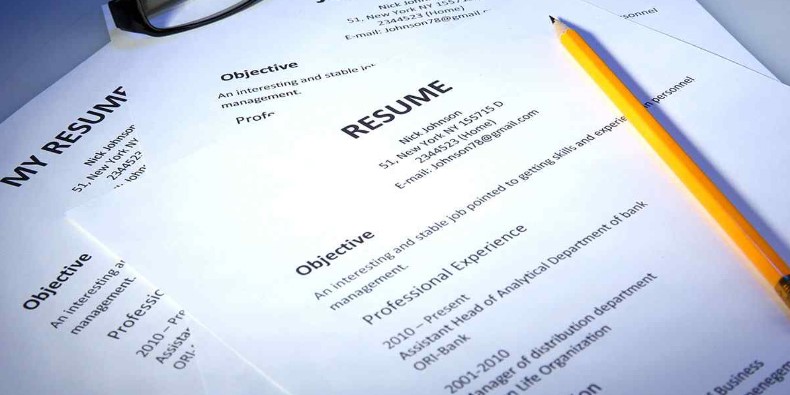
How to write an achievement-based resume?
An achievement-based resume, also known as an accomplishment-based resume, is a type of resume format that focuses on highlighting the specific achievements, accomplishments, and contributions you’ve made in your previous roles or experiences. Instead of just listing job responsibilities and tasks, an achievement-based resume emphasizes the tangible results and outcomes you’ve achieved.
This format is designed to showcase your abilities and demonstrate the value you’ve brought to your previous employers. By providing quantifiable and measurable accomplishments, you can effectively demonstrate your skills and expertise to potential employers.
Here’s how an achievement-based resume typically differs from a traditional resume:
Emphasis on Accomplishments: Rather than simply listing your job duties, you’ll include bullet points or sections that highlight specific achievements and results. This could include things like exceeding sales targets, streamlining processes to increase efficiency, receiving awards or recognition, or contributing to the growth of a project.
Quantifiable Results: Whenever possible, use specific numbers, percentages, or metrics to quantify your achievements. For example, “Increased sales revenue by 25% within the first quarter” or “Managed a team that reduced production costs by 15%.”
Contextual Information: Provide context for your accomplishments by briefly explaining the situation, the actions you took, and the outcomes you achieved. This helps potential employers understand the scope and impact of your contributions.
Tailored to the Job: Customize your achievements to align with the requirements of the job you’re applying for. Focus on accomplishments that are most relevant to the position you’re seeking.
Demonstrates Skills: An achievement-based resume not only showcases what you’ve accomplished but also indirectly highlights the skills and qualities that contributed to those accomplishments.
Showcases Initiative and Impact: This format allows you to highlight instances where you went above and beyond your job description, took initiative, and made a notable impact on the organization.
Here’s an example of how an achievement-based bullet point might look on a resume.
Traditional Resume Bullet Point:
Managed a team of sales representatives.
Achievement-Based Resume Bullet Point:
Led a high-performing team of 8 sales representatives, surpassing quarterly sales targets by an average of 20% and contributing to a 30% increase in overall team revenue.
Overall, an achievement-based resume can be more compelling to potential employers as it provides concrete evidence of your capabilities and showcases how you’ve added value in your previous roles.


Sample template of the achievement-based resume link is here to
Writing a resume involves crafting a document that effectively highlights your skills, experiences,.. and qualifications to potential employers. Here’s a step-by-step guide to help you create a strong resume:
Choose a Format: Decide on the resume format that suits your experience and career goals. Common formats include chronological, functional, and combination/hybrid. Choose the one that best showcases your strengths.
Header: Include your name, contact information (phone number, email address), and location (city and state).
Summary or Objective: Write a brief statement summarizing your career goals, skills, and what you can bring to the role. If you’re experienced, use a summary. If you’re just starting out or changing careers, use an objective.
Education: List your educational achievements in reverse chronological order, including degrees, institutions, majors, graduation dates, and any honors.
Work Experience: List your work experiences in reverse chronological order. Include the company name, location, your job title, dates of employment, and a bulleted list of your responsibilities and achievements. Use action verbs and quantify your achievements whenever possible.
Skills: Include a section highlighting your relevant skills. This can include technical skills, soft skills, languages, certifications, and more.
Achievements: If applicable, highlight any significant achievements, awards, or honors you’ve received.
Volunteer Work or Extracurricular Activities: If relevant, include any volunteer work, internships, or extracurricular activities that demonstrate your skills or values.
Keywords: Tailor your resume to the specific job you’re applying for. Use keywords from the job description to show alignment with the position.
Formatting: Keep the format clean and easy to read. Use a consistent font, bullet points, and headers. Avoid excessive use of bold or italics.
Length: Aim for a concise resume, ideally one page for early-career professionals and up to two pages for those with more experience.
Proofreading: Check for grammatical errors, typos, and formatting issues. It’s a good idea to have someone else review your resume as well.
Customization: Customize your resume for each job application by emphasizing the skills and experiences most relevant to the specific role.
Contact Information: Ensure that your contact information is accurate and up to date.
Save and Share: Save your resume as a PDF or Word document. When submitting electronically, follow the employer’s instructions regarding file format.
Remember, your resume is a dynamic document that you can update as your experiences and career goals evolve. It’s your first opportunity to make a positive impression on potential employers, so take the time to create a well-crafted and tailored document.
This sample template helps you to prepare your achievement-based resume quickly.


